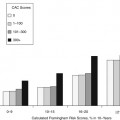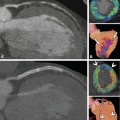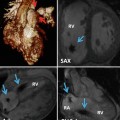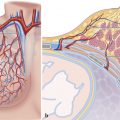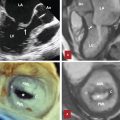Tooth decay, or dental caries, is one of the most common oral health issues worldwide. Despite prevention advances, cavities afflict people of all age groups. Besides brushing regularly, flossing, and dentist appointments, detecting cavities in their initial stages is also a good idea. Apart from preventing pain, it also saves teeth from aggressive treatments such as root canals or extractions.
This is where dental radiology—the use of X-rays and imaging tools within dentistry—comes into play. Radiographs allow dentists to see beyond the naked eye, revealing cavities that lie between teeth, under fillings, or even below the gum line.
Without these imaging technologies, many would not be discovered until they are highly advanced and painful.
This article explains how dental radiology aids in the detection of early caries, the type of radiographs there are, how they function, and why they are so vital in modern dentistry.
Why Early Detection Matters
Cavities develop gradually over a time span. In its initial stage, a tooth can have very small areas of demineralization that cannot be identified by standard methods. If identified early enough, such areas can generally be controlled using non-surgical methods, like fluoride therapy or sealants, without undergoing drilling and filling.
Sadly, most patients visit the dentist after they have pain, and at that point, decay is usually well-advanced. Treatment at that time is more complicated and expensive. Early detection by radiology:
- Saves natural tooth structure.
- Reduces invasive treatment.
- Reduces the cost of treatment.
- Improves overall oral health results.
The Limitations of Visual Examination
Dentists are extensively trained to see evidence of decay on regular check-ups. Dental mirrors, explorers, and intense lights are what dentists use to look for cavities. Certain caries lesions cannot be seen by the naked eye at all, however.
- Cavities between teeth (interproximal caries) are most often invisible.
- Decay that begins below old fillings or crowns can’t possibly be seen.
- Early demineralization of enamel is hard to spot without a photograph.
That is why radiographs are still a vital tool for accurate diagnosis.
Types of Dental Radiographs Used in Caries Detection
Radiographs of varying types produce varying levels of detail, which allow dentists to inspect caries, as well as other oral conditions.
1. Bitewing Radiographs
Bitewings are employed most commonly for caries identification. Bitewings capture the crowns of both the upper and lower teeth in a single instance, thereby easy identification of spaces between the teeth holding cavities. Bitewings are very good at displaying decay in its initial form.
2. Periapical Radiographs
These X-rays from the crown to the tip of the root of the entire tooth are useful in finding the decay at the root level and in ascertaining the status of infection in extreme cases.
3. Panoramic Radiographs
Panoramic X-rays provide a broad view of the entire mouth, including the jaws and surrounding tissues. While not as detailed as bitewings in detecting caries at an early stage, they are useful in determining large patterns of decay or bone loss.
4. Digital Radiography
Modern dentistry is headed towards the use of digital X-rays, which expose patients to less radiation and provide immediate radiographs. These can be manipulated, enlarged, and conveyed to patients for didactic purposes.
How Radiology Helps in Early Diagnosis of Caries
Radiographs reveal the sneaky changes in tooth structure, beyond sight by the human eye. In an X-ray:
- Healthy enamel is lighter (radiopaque) because of its density and capacity to withstand penetration by X-rays.
- Areas of decay are darker (radiolucent) due to demineralized tooth structure allowing more X-rays to pass through.
Dentists look for these variations so that they can detect lesions at an early stage. Tiny dark circles on a radiograph could be incipient caries, and preventive treatment is possible before the progress of decay.
Improvements in Radiographic Technology
Technology has greatly improved the comfort, accuracy, and safety of dental imaging.
- Digital radiography decreases radiation exposure by as much as 90% from that of conventional film.
- Cone Beam Computed Tomography (CBCT) offers three-dimensional (3D) images of teeth and adjacent structures, handy in advanced cases.
- Artificial intelligence (AI) programs are being designed to allow dentists to automatically identify caries by reviewing radiographs more accurately.
Such technologies make patients receive accurate diagnoses as well as personalized treatment planning.
Patient Concerns: Safety and Comfort
Most people worry about radiation exposure from dental X-rays. What needs to be stated is that dental radiographs use very small amounts of radiation—less than medical X-rays.
Modern digital imaging lowers exposure further while enhancing comfort. Slower sensors and faster processing save patients from having to hold films or plates in their mouths for longer periods.
Dentists also use protective aprons and thyroid collars to limit unwanted exposure.
The Dentist–Patient Communication Factor
For dental radiology to be effective, patients must be informed about how important it is. Dentists have an obligation of informing patients why X-rays are necessary and how they help in early diagnosis. Patients can mostly be reluctant, viewing radiographs as permissive.
As Dr. Rima Kanbaragha puts it, “When patients are presented with their own X-rays and understand what we are looking for, they understand how much imaging is crucial to maintaining their healthy mouths. It eliminates the unknown and makes them appreciate early treatment.”
By involving the participation of patients in diagnosis, dentists foster cooperation and trust, which enhances the effectiveness of early treatment.
Preventive Care and Radiology Hand in Hand
Radiographs are excellent at detecting cavities when they are tiny, but they are not a substitute for preventives. Dentists use imaging along with other strategies:
- Regular exams and cleanings.
- Fluoride applications to strengthen enamel.
- Sealants in teenagers and kids.
- Patient education in flossing and brushing.
All these strategies form an effective barrier to tooth decay.
The Future of Caries Detection
Dental radiology is becoming newer. Patients will soon be facing even newer and more advanced equipment like:
- Radiation-free laser fluorescence technologies that can identify demineralization.
- Artificial intelligence-based radiology for faster and more accurate detection of cavities.
- Integrative imaging systems that combine 2D and 3D scans to provide the best diagnosis possible.
These technologies aim to deliver more rapid, more secure, and more precise caries detection, with less demand for invasive therapies, so patients can have healthier smiles.
Stay updated, free articles. Join our Telegram channel

Full access? Get Clinical Tree


